Chris Grinter, 30. maj, 2010 For the rarely reoccurring quiz series, here is a new image. Who is this moth?
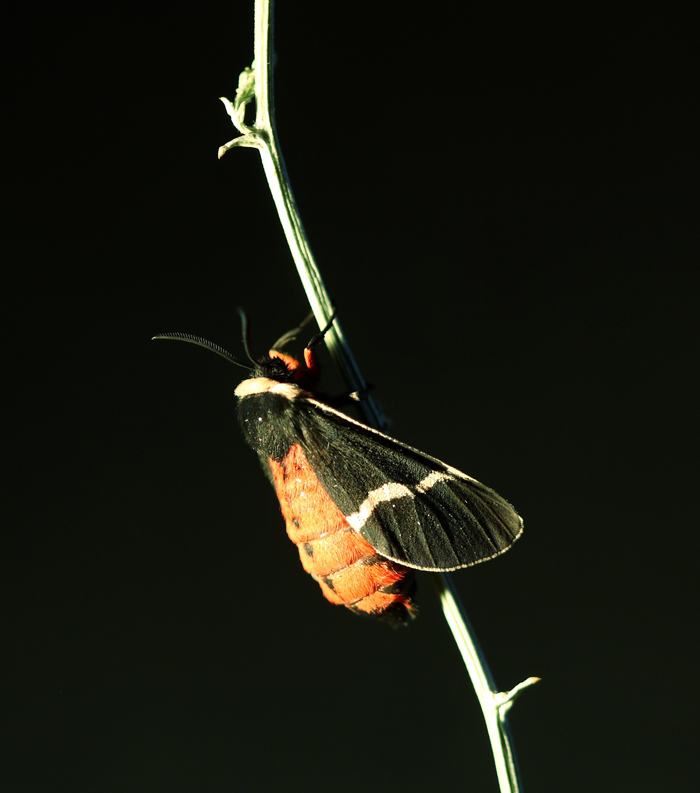
Chris Grinter, na 25. maj, 2010 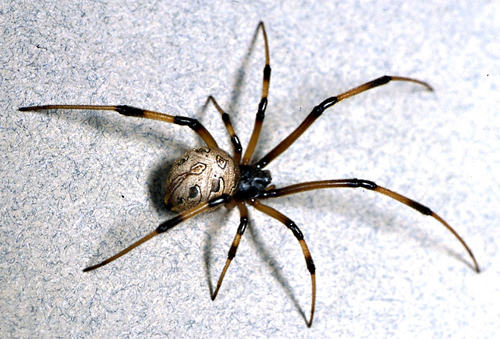
Za tiste Kalifornijce, ki berejo, predvsem tiste na jugu, bodite pozorni na tega čudovitega malega pajka, Latrodectus geometricus – rjava vdova. Arahnologi na UC Riverside spremljajo širjenje te invazivne vrste. Ironično se izkaže, da ni tako nevaren kot naša domača črna vdova. Kljub temu, ni iz okolice teh krajev (bi bilo treba reči v vašem najboljšem južnjaškem zvoku). Če najdete primerek, še posebej, če niste v okrožjih LA/Orange/SD, morali bi stik ekipa pri UCR.
Chris Grinter, na 25. maj, 2010 S Koreja Kolebanje na robu vroče vojne, ekološka katastrofa brez primere deleža in državljanskih nemirov na Jamajki (nekdo harshed svoj mehak) – da naštejemo samo nekaj današnjih naslovnic iz drugih virov – CNN vzame čas Dlake svoje prvo stran.

Ponavadi dobim malo navdušena, ko sem prišel čez članki, kot je ta ker sem vedno upanje za nekaj tako smešno je treba razpravljati. K sreči je CNN vodijo ekipe pijanih marmozetkah ki radi romanca sranje na nas. Pred Skeptical Moth epohe želim deliti povezave na naslovni strani zgodbe o ugotovitvah Bigfoot, Chupacabra in tujci s samo nekaj prijateljev, ali pa se je razširil po vsem facebook. Sedaj lahko zasmehovanje CNN na google arhivirajo medij.
Jaz samo ne razumem smisla tega članka. John Blake ne obravnava razlago za ta pojav, Ponujamo mnenje, ali ne vprašaš. Seveda, ga vpraša, če je Bog res briga, kdo zmaga, vendar pa to vprašanje ni več veljaven, kot sprašuje, če moj pes (tudi izmišljena) briga, kakšen avto vozim (razen Seveda je psihično! Resno…ljudje to verjamejo). Ko berem članke, kot je ta počutim, kot da sem razvrščanje dokumentov v srednji šoli angleškem razredom. Ni novinarske integritete, inteligentni mnenje ali dejanske podlage za praskanje – obstajajo samo lepe slike in besede, ki jih ponazarjajo. Nastavitev celotno molitev in vero vprašanje razveljavilo; Športniki so bili vedno znani po svoji vraže (druga). The “govoru” pojav nedvomno spada v to kategorijo. Po doseženi statistično majhno izid (glej tople roke), bojijo se pozabijo Boga v strahu pred čudežno izgubili svojo sposobnost (ni nujno, da zavestno). Iz neznanega razloga Blake zadržuje ta članek le šport – Morda mu je namerno igral v velikem demografskih ameriških športov ljubečega, brstično otekanje, Kristjani – ampak očitno je to ponovno pojavila tema. Na vsakem podelitvi nagrad Boga, Jezus ali Alah je ponavadi na vrhu zahvalo seznama. Pozabite vse, da se trdo delo in talent, boste morda morali, da je nekaj ali nekdo drug. Opustijo vsi racionalno misel mistično bitja je nevarna stvar. Ta miselnost je enaka tisti, ki omogoča, odvisniki kriviti nikogar, ampak sami (tudi če je zasvojenost delno hard-žično), verjamejo v zdravljenje z vero, začeti sveto vojno, ali pusti katoliško cerkev krivi hudič.
CNN je utripajoče luči in Ropotanje ključe čez obraze svojih bralcev. Ponavadi sem ga pustite do Fox News, da žali moje inteligence, ampak sem vesel, da vem, da imate možnost izbire na tem trgu.
Chris Grinter, on May 24th, 2010 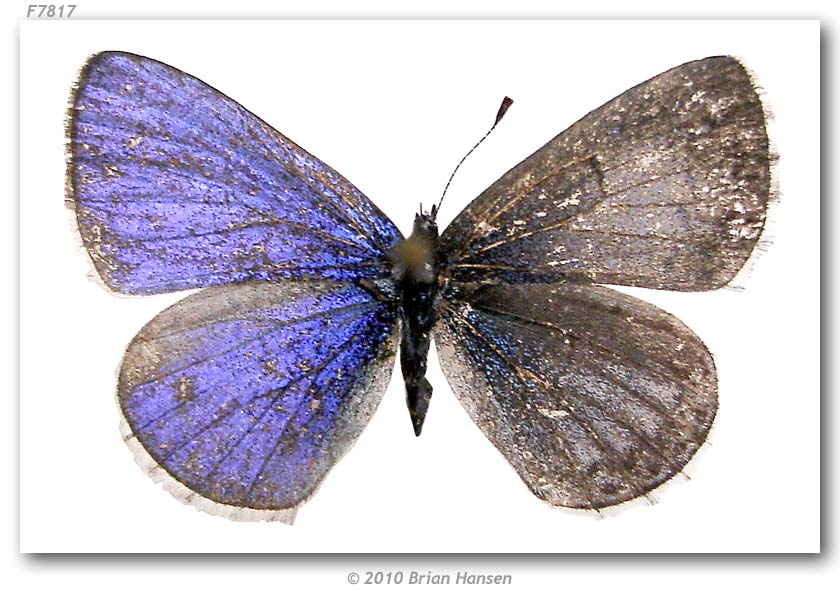
A once in a lifetime occurrence, a bilateral gynandromorph. Na kratko, a glitch during cell differentiation creates asymmetrical chromosome patterns, which leads to asymmetrical sex expression in the adult insect. If you haven’t clicked the link above, do so, it’s an excellent description with some awesome photos.
Back to the butterfly. I was in the field this March just above the middle fork of the American River on the hunt for Xanthothrix, with me was Brian Hansen and Bob Patterson. Bob and I were on a mission, to locate a remote patch of Coreopsis high on serpentine soils, and to find our rare little moth. Brian came along to enjoy the day and explore the butterfly fauna. While Bob and I hiked ahead anxious to see if the days hike would be worth it, Brian stopped frequently to net passing leps. It was probably less than an hour out from the car when we hear form behind us on the trail “Hey guys… I think I just caught a gynandromorph!!!” v redu, I was skeptical. Bob and I approached to see Brian holding a little blue in his hand, which unmistakably, was a bilateral gynandromorph. I was blown away. Bob has over 50 years of experience as an avid lepidopterist and has never seen one of these in the wild. To make this feat even more impressive, this small blue butterfly is one of the commonest insects in the American west in the spring. danes, they were puddling in great numbers along the trail, and I hadn’t even stopped to blink at one. Brian just netted a one in a million catch. Perhaps it is the curse of a jaded lepidopterist that will keep me from such once in a lifetime discovery; but I know I will be looking closer at even the commonest butterfly as it wings by me.
So as you can see the butterfly is exactly half male and half female (the right side is female). If you look very closely you can even see a perfect vertical line bisecting the body if the insect (looks like a photoshop edit almost), gynandromorphism after-all is expressed throughout the entire body and even the genitalia are contorted into strange shapes.
The specimen is in Brian Hansen’s personal collection, and you can find the images hosted on the Butterflies of America website.

Chris Grinter, on May 23rd, 2010 
Seveda, it was named Phallus drewsii. This comes form the list of the top 10 species named v 2009, complied by Arizona State University (not a very good list if 7 of my new species weren’t on there…). While I tend to avoid phallic and O’Keeffesque botany, this one I couldn’t resist because it was named after someone from my own institution. Dr.. Robert Drewes now has a small phallic fungi named after him (with permission). Taxonomy humor at work.
Chris Grinter, on May 18th, 2010 
Has just been posted over at Hrošči v Busha. Go over and explore the latest moth carnival, a gathering of blogs that have featured moths in one way or another over the last month or so.
Chris Grinter, on May 18th, 2010 News in from India, a butterfly photographer has been kidnapped. A local park official who was visiting the north eastern province Arunachal Pradesh was taken at night by a gang of armed youth-rebels. Efforts to find him have been hampered by the weather and remote terrain. India has recently become one of the most difficult countries to conduct research in, and now we are all reminded of its continuing history of violence. Often it is within the remote and wild portions of a developing country that harbors both stunning biodiversity and militant dissidents. While in Ecuador my group kept an eye out for Columbian FARC rebels who may have strayed across the border; thankfully it was only a minute possibility they would be there in the first place, and nothing was seen. I think some of my most harrowing field work has been along the US-Mexican boarder states and in Mexico itself. Drug runners would rather shoot you before asking you to move out of their way, and roaming banditos were responsible for a murder of a colleagues friend in Oaxaca years ago. Not surprisingly, the lure of untapped biodiversity keeps pulling us in. Stay safe in the field!
Chris Grinter, on May 5th, 2010 Over a long weekend I’ll be out in the field. Stay tuned for incredible stories (no hype here…).
While I’m away enjoy the following from other excellent bloggers:
Continue reading Gone Collecting
Chris Grinter, on May 5th, 2010 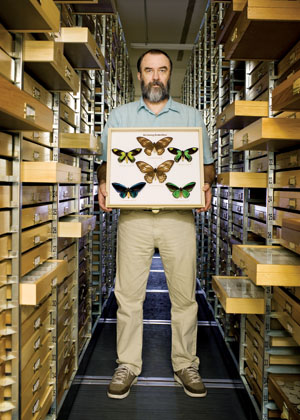 It’s good to throw a changeup every one in a while, and this week here is an article that is actually GOOD. Da, you read it here first, a positive article about entomology collections. We all need a breather after that Fox news fiasco with the Michigan State collection. The Honolulu Magazine does a really great job (hey… I knew that title sounded familiar… it’s a book by May Berenbaum) and they actually seem to get it. There are some great quotes from Dr. Neal Evenhuis (pictured) and Shepherd Myers; go read about the Bishop Museum’s collections and the awesomeness of being an entomologist on one of the most beautiful places in the world. Dejansko, Neal, need a curatorial assistant? It’s good to throw a changeup every one in a while, and this week here is an article that is actually GOOD. Da, you read it here first, a positive article about entomology collections. We all need a breather after that Fox news fiasco with the Michigan State collection. The Honolulu Magazine does a really great job (hey… I knew that title sounded familiar… it’s a book by May Berenbaum) and they actually seem to get it. There are some great quotes from Dr. Neal Evenhuis (pictured) and Shepherd Myers; go read about the Bishop Museum’s collections and the awesomeness of being an entomologist on one of the most beautiful places in the world. Dejansko, Neal, need a curatorial assistant?
Chris Grinter, on May 4th, 2010
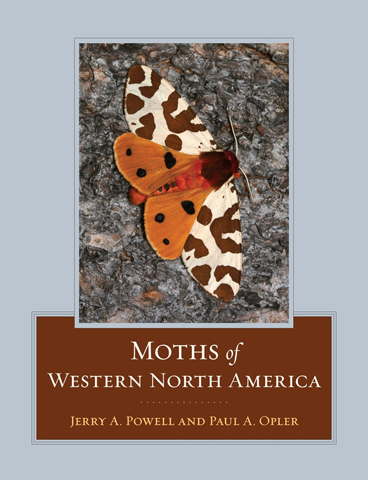
For those who are not aware, a new book hit the market at the end of last year. “The Moths of Western North America“, Powell and Opler. At only $95 it’s worth every cent (ali $75 for the e-book, but I hate e-books). It’s a remarkable tome and the first of its kind for the western states. Not only is it a spectacular reference, but it sets the bar for all insect books. Ne, not every moth in the west is in there (that would break my desk and wallet at over 6,000 vrste), but almost one of every genus and common or remarkable species has a photograph, life history and distribution. Most importantly it covers microlepidoptera. I grew up on the eastern counterpart, Moths of Eastern North America by Covell. I had two copies, one for the field and one for my desk – and had to replace the field copy at least once. It was a great book, but Powell and Opler have run laps around it.
The other good news is you can now access all 1,228 moth illustrations and corresponding data online for prost. Go to CalPhotos and search for Powell, ali click here. The nice part about this is the somewhat smaller microlep photos in the book are available in high-resolution for better identification. Beautiful addition to the reference and easier than sending everyone a CD.
|
Skepticizem
|









